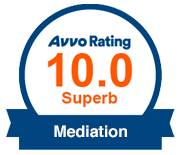Steps in a Contested Divorce/Custody Case in Maryland
One of the questions I get asked most in a divorce or custody consult is what is the court “process” like if their cases is contested. Generally, potential clients are surprised to learn how long a contested case could take and how much happens before they actually “get their day in court.”
First, it is important to understand that divorce and custody actions do not have to be litigated. If you and the opposing party are able to reach a written agreement resolving all issues in the case, then you can submit the agreement to the court and ask to be divorced/for the agreement to be incorporated into an order. However, for that to happen both parties must actually agree. When there’s no agreement, your only option to get a resolution is to file a case and ask the court for relief. All counties in Maryland are slightly different in the way they handle divorce/custody cases, but there are similar steps and procedures that each case will go through. Below is a general outline of the major steps in a divorce/custody case.
STEP 1: File a Complaint.
The Complaint will state the parties, name the children, set forth the grounds for the case, and list the relief requested by the Plaintiff. The Plaintiff is the first person to file the case (note: in Maryland, there is no preference for Plaintiff vs. Defendant in a case – there may be strategic reasons for wanting to file first or wait until the opposing party files, but the Court is not going to assume anything just because one person filed before the other).
STEP 2: Serve Opposing Party.
When the Complaint is filed, the Court will issue what is known as a Summons. It is a piece of paper from the clerk directing the Defendant (opposing party – either your spouse or your children’s other parent) to respond to your Complaint. The Summons, along with copies of everything that was filed, will have to be served on the Defendant. Service can be effectuated by having the opposing party personally served (by a sheriff or individual over 18 who is not a party to the case) or by certified mailing, restricted delivery (so only the person who the envelope is addressed to can sign for it). You will have to prove you served the other side – either by having an affidavit of service filed if the opposing party was served in person or by sending proof of the receipt from the restricted delivery with the opposing party’s signature.
STEP 3: Opposing Party will file an Answer.
Once the opposing party is served, they will have to file an Answer to your Complaint within a certain amount of time after service. If the opposing party is in Maryland, they will have to respond within 30 days of service. If they are outside of the State, they will have 60 days to respond. If they are outside the country, they will have 90 days to respond.
STEP 4: Scheduling Conference.
A scheduling conference is a short court appearance where the Court will determine what the issues are in the case, what (if any) services are required, set deadlines for discovery and required filings, and set (some) future hearing dates. There is no testimony at a scheduling conference – neither party is put under oath. If attorneys are involved, they will do most of the talking about what services are being debated and clearing dates for future deadline.
STEP 5: Discovery.
Discovery is the exchange of information during a case. Once a case is initiated, each party hast the right to conduct discovery so that they have all relevant information going into a trial. The two basic forms of discovery are Interrogatories and Requests for Production of Documents. Interrogatories are questions that the opposing party must answer under oath. Requests for Production of Documents seek documents or other tangible items relevant to the matter. For example, in a divorce case, discovery would include questions about income, assets, debts, grounds for divorce, evidence that the opposing party may want to introduce, and (if children are involved) questions relating to custody/access. Discovery is extremely important, especially in cases where you are not sure of the other party’s assets/finances. Even if you know the answers to some of the questions asked, it is helpful to have them answered under oath. There are many other forms of discovery and ways to get information during a case as well, but it is important that you pay attention to any discovery deadline set by the court in your matter.
STEP 6: Pendente Lite Hearing.
Pendente Lite (a very fancy Latin term for during litigation) hearings generally have to be requested by one (or both) of the parties. In some counties, you have to file a Motion for a Pendente Lite Hearing while in others you can request it during the scheduling conference. A pendente lite hearing is generally a short (in Howard typically up to 3 hours) hearing dealing with limited issues until the final merits trial in a matter. Depending on the county you are in, and the complexity of the issues in your case, contested divorce cases can take a year or (significantly) more to resolve. If custody is at issue, for example, a year is a long time to wait for a decision and could lead to stress on a child if the parties cannot agree to a temporary schedule, so the court will hear testimony and put a temporary schedule in place. Pendente Lite hearing topics generally include: custody/access, child support, alimony, and use and possession of a family home. Pendente Lite hearings do not resolve all issues in a case and cannot dispose of property.
STEP 7: Settlement Conference.
Settlement Conference are similar to mediations. A judge or magistrate will meet with the parties and their attorneys to determine what the outstanding issues still are and see if they are able to help the parties resolve those issues. Many times having a judge or magistrate weigh in on a situation is helpful to the parties and their attorneys so they can continue settlement discussions. Settlement conferences are confidential, so neither party can use what the other party said in a settlement conference against them in trial, which encourages open and frank communication. If the parties are making progress, the judge or magistrate may decide to allow them to schedule another settlement conference to see if the remaining issues can be resolved.
STEP 8: Merits Trial
If you are unsuccessful in resolving your matter, then you will have the opportunity to present your case to a judge (or, in certain circumstances, a magistrate) and that judge will decide the outcome of your case. You will have the opportunity to present evidence, testify, have others testify on your behalf and cross-examine the opposing party and their witnesses. At the end of your presentation you or your attorney will make a closing argument about what you would like the court to do and why you believe the court should do that.
STEP 9: Decision
Unlike in the movies or on TV, unless the issues are very limited, it is rare for a judge to make a decision “from the bench”, meaning directly after a merits trial. Typically, a judge will take the matter under advisement and will issue a written decision or will schedule a time to give their decision to the parties/their counsel orally. There is no timeframe for a judge to have to make a decision – sometimes it is a week or two, sometimes it is months. The judge will issue a Judgment or Order (depending on the case) which resolves the issues pending before the Court. If you or the opposing party believe the Judge made a mistake, there are several avenues for appealing a judge’s decision.
Keep in mind, there are any number of things that could happen to change the general steps outlined above and, depending on the facts of the case, there may be additional pleadings/hearings/evaluations, etc. There are situations where some of the steps (such as discovery) may occur earlier or later. Courts also have certain requirements of litigants (such as financial statements and parenting plans) that are not included as a major step, but are incredibly important to the case. The above is intended for a general overview of the major steps of a typical case.
If you are involved in a custody or divorce matter, having an attorney who can guide you through the process and advise you of your rights can make all the difference. At Weinberg & Schwartz, our attorneys focus solely on family law matters (divorce, custody, access, child support, protective orders, peace orders, etc.) and have appeared in courts all over the state. We are accepting new clients and would be happy to set up a consultation to discuss your case and your options!
**The above information is provided for information purposes only and should not be construed as legal advice.









